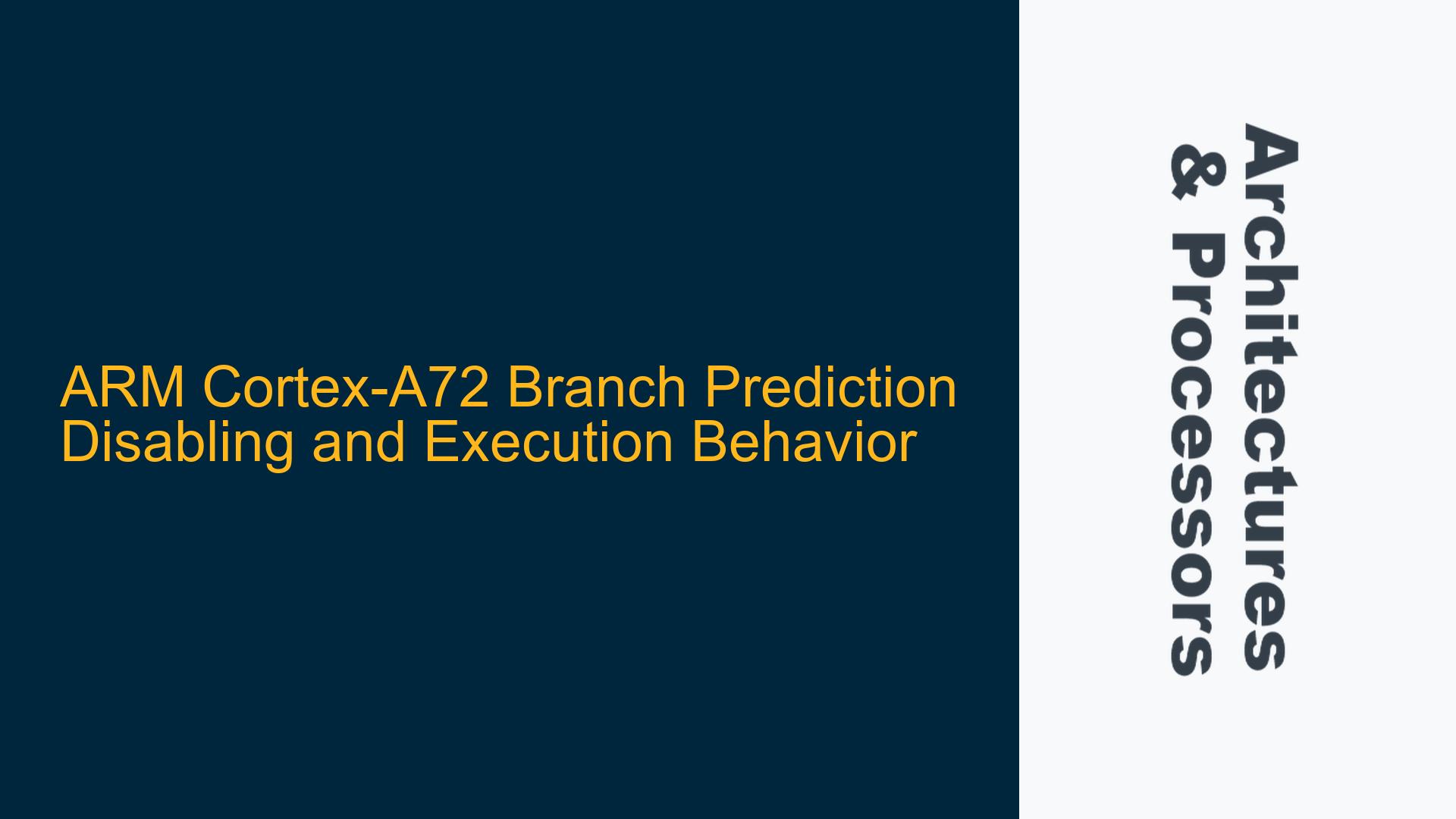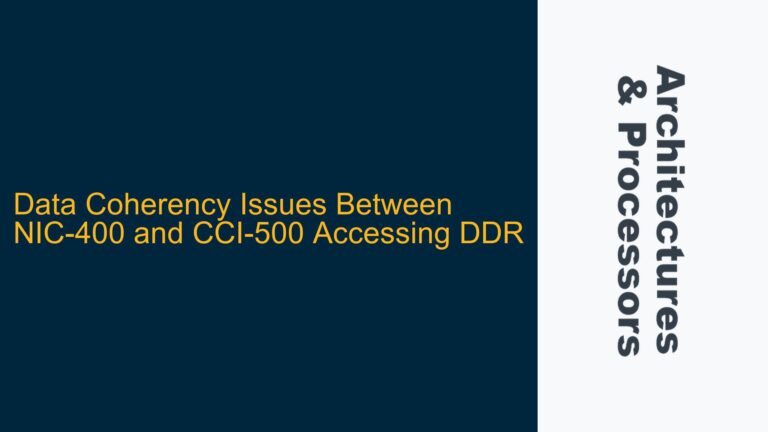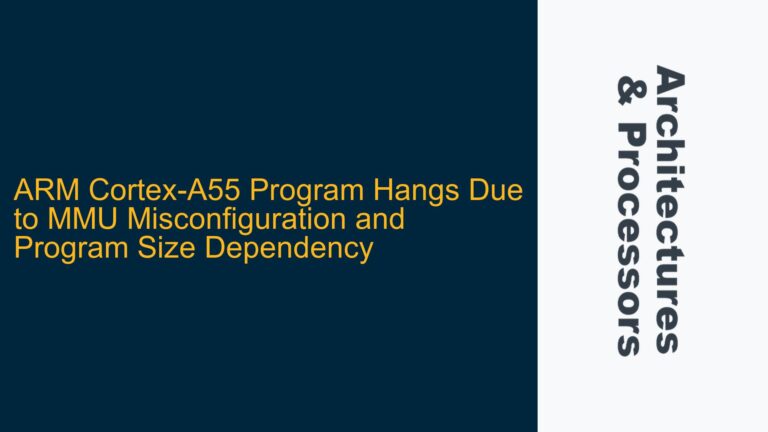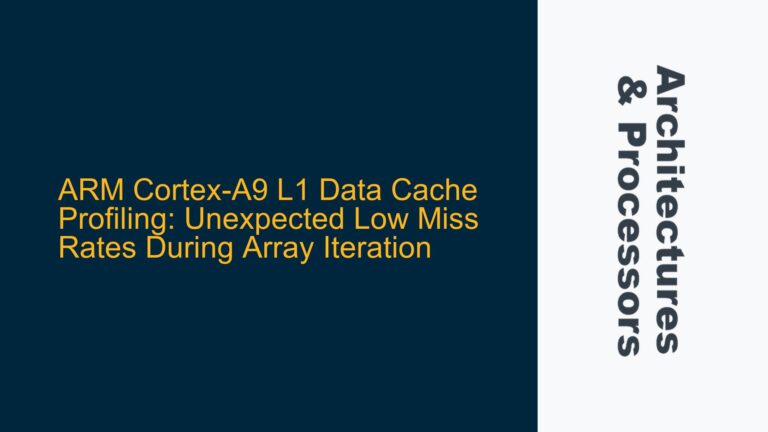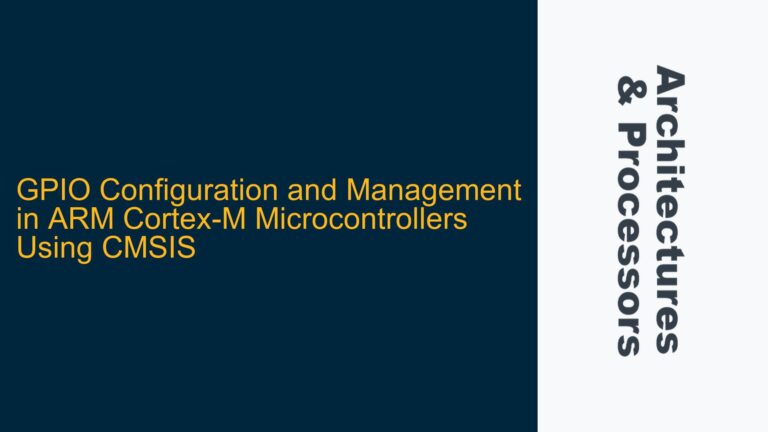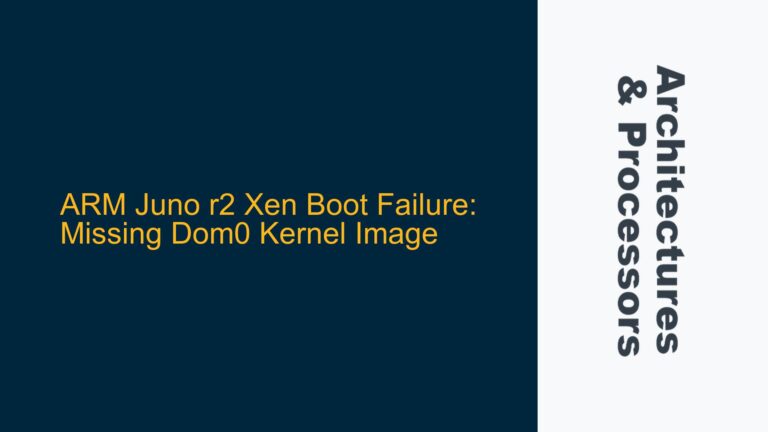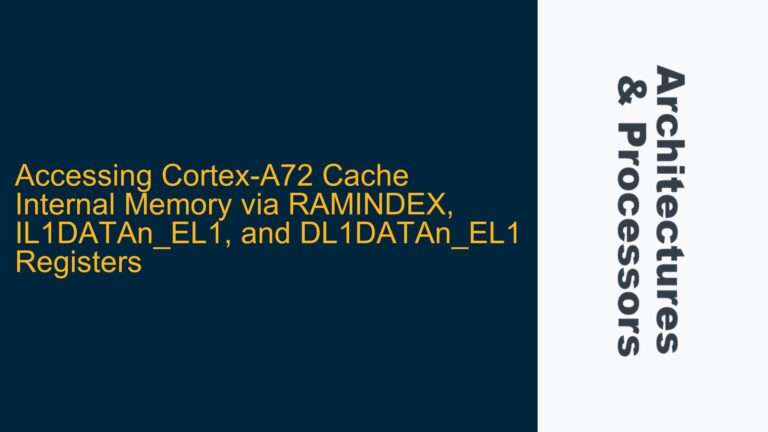ARM Cortex-A72 Branch Prediction Mechanism and Disabling Implications
The ARM Cortex-A72 is a high-performance out-of-order execution core designed for advanced applications requiring both power efficiency and computational throughput. One of its key features is the branch predictor, which speculatively executes instructions based on predicted branch outcomes to minimize pipeline stalls. Disabling the branch predictor on the Cortex-A72, as discussed, is a non-trivial operation with significant implications for execution behavior, performance, and system reliability.
The branch predictor in the Cortex-A72 operates by maintaining a history of branch instructions and their outcomes, using this data to predict whether a branch will be taken or not. This prediction allows the core to fetch and execute instructions speculatively, reducing the latency associated with waiting for the branch condition to resolve. When the branch predictor is disabled, the core loses this speculative execution capability, which can lead to pipeline stalls and increased instruction latency.
Disabling the branch predictor is typically achieved by modifying the system control registers. For example, the SCTLR_EL1 register contains a bit (SCTLR_EL1.BT0 and SCTLR_EL1.BT1) that controls the behavior of the branch predictor. Setting these bits to zero disables the branch predictor, forcing the core to wait for branch resolution before proceeding with instruction fetch and execution. This configuration is often used in safety-critical systems where speculative execution poses a risk of incorrect state changes or security vulnerabilities.
However, disabling the branch predictor does not mean the core will always halt execution until the branch is resolved. Instead, the core may adopt a default behavior, such as assuming all branches are not taken, or it may simply fetch instructions sequentially without speculation. The exact behavior depends on the specific implementation of the Cortex-A72 and the configuration of the system control registers. This ambiguity is a critical consideration for developers aiming to disable branch prediction for security or reliability reasons.
Performance Degradation and Pipeline Stalls Due to Disabled Branch Prediction
Disabling the branch predictor on the ARM Cortex-A72 can lead to significant performance degradation, particularly in workloads with high branch instruction density. The branch predictor is designed to mitigate the performance impact of conditional branches by reducing the number of pipeline stalls. Without it, the core must wait for the branch condition to resolve before fetching the next instruction, leading to increased latency and reduced throughput.
In an out-of-order core like the Cortex-A72, the execution pipeline is deeply optimized for speculative execution. When the branch predictor is disabled, the core loses the ability to speculatively execute instructions beyond a branch, resulting in pipeline bubbles. These bubbles occur because the core cannot proceed with fetching and decoding instructions until the branch outcome is known. The impact of these stalls is magnified in applications with complex control flow, such as decision-making algorithms or recursive functions.
The performance impact of disabling the branch predictor can be quantified using cycle-accurate simulation or performance counters. For example, the BR_MIS_PRED performance counter can be used to measure the number of mispredicted branches, while the INST_RETIRED counter provides insight into the overall instruction throughput. Disabling the branch predictor typically results in a higher BR_MIS_PRED count and a lower INST_RETIRED count, indicating reduced efficiency.
Additionally, the Cortex-A72’s out-of-order execution engine relies on speculative execution to keep its execution units busy. Without branch prediction, the core may struggle to maintain a high instruction-level parallelism (ILP), leading to underutilization of the execution units. This underutilization can further exacerbate performance degradation, particularly in workloads with high ILP potential.
Mitigating Performance Impact Through Code Optimization and Hardware Configuration
While disabling the branch predictor on the ARM Cortex-A72 can have significant performance implications, there are several strategies to mitigate these effects. These strategies include code optimization techniques, hardware configuration adjustments, and the use of alternative architectural features.
One approach to mitigating the performance impact is to optimize the code for reduced branch density. This can be achieved by restructuring control flow to minimize the number of conditional branches, using techniques such as loop unrolling, function inlining, and branchless programming. For example, replacing a series of conditional branches with arithmetic operations or lookup tables can reduce the reliance on branch prediction and improve execution efficiency.
Another strategy is to leverage the Cortex-A72’s hardware features to compensate for the lack of branch prediction. For instance, the core’s prefetch engine can be configured to aggressively fetch instructions from predictable memory regions, reducing the latency associated with instruction fetch. Additionally, the use of data prefetching and cache management instructions can help maintain a steady flow of data to the execution units, minimizing the impact of pipeline stalls.
In some cases, it may be possible to selectively disable branch prediction for specific code sections while leaving it enabled for others. This can be achieved using system control register modifications at runtime, allowing developers to balance performance and security or reliability requirements. For example, critical sections of code that require deterministic execution can have branch prediction disabled, while less critical sections can retain the performance benefits of speculative execution.
Finally, developers can use performance profiling tools to identify and address bottlenecks caused by disabled branch prediction. Tools such as ARM DS-5 or Streamline can provide detailed insights into pipeline stalls, branch mispredictions, and execution unit utilization, enabling targeted optimizations. By combining these tools with the aforementioned strategies, developers can achieve a balance between performance and the benefits of disabling branch prediction.
In conclusion, disabling the branch predictor on the ARM Cortex-A72 is a complex decision with significant implications for performance and execution behavior. By understanding the core’s architecture and leveraging optimization techniques, developers can mitigate the performance impact and achieve their desired system behavior.
